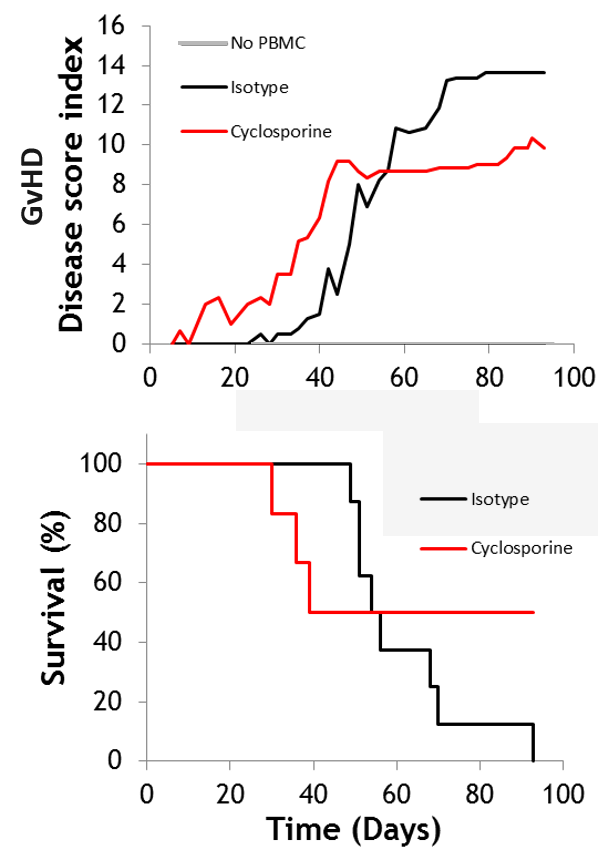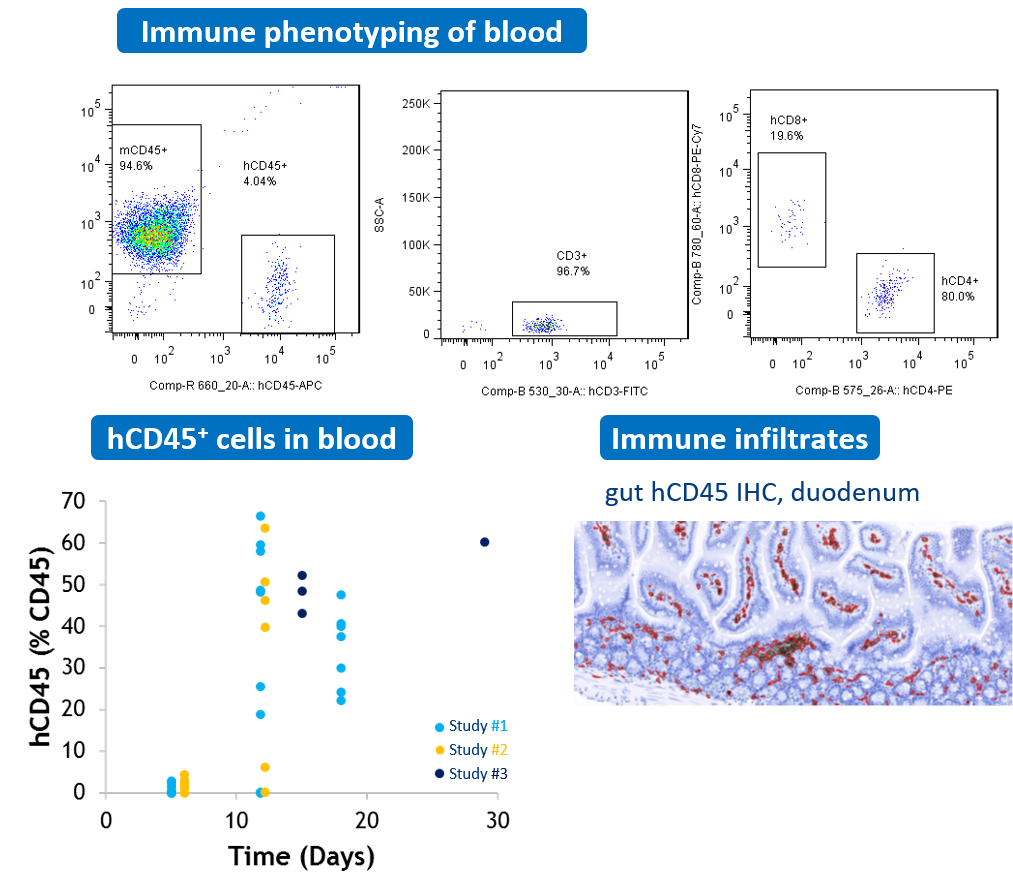
Using GvHD Models to develop new therapies for the treatment of Graft vs Host Disease
Graft-versus-Host Disease (GvHD) models are experimental systems used in preclinical research to simulate and study the pathophysiology of GvHD, a potentially severe inflammatory complication that can occur after allogeneic hematopoietic stem cell transplantation (HSCT), with up to 50% of patients undergoing GvHD in that context.
In GvHD, immune cells from the transplanted donor tissue recognize the recipient’s tissues as foreign and mount an immune response against them, leading to tissue damage and inflammation. GvHD models are valuable tools to investigate the underlying mechanisms of the disease and to test potential therapeutic interventions.
Standard readouts in GvHD models
Body weight
Kaplan-Meier survival analysis
Disease scoring
Engraftment and phenotypic analysis
Histopathology
Cytokine analysis
Flow cytometry
The majority of GvHD models – refered to as allogeneic GvHD models – are performed in mice, where hematopoietic cells are transplanted from one mouse strain (donor) into another (recipient) with a different genetic background. This sets the stage for immune cells to recognize the host tissues as foreign and induce GvHD.
GvHD humanized mouse models – or xenogeneic GvHD models – involve engrafting human hematopoietic cells (mostly human peripheral blood mononuclear cells, PBMC) into immunodeficient mice. This approach allows researchers to study GvHD with a more human-like immune system and provides a platform for testing human-specific therapeutic interventions.
We offer the possibility to get access to qualified human PBMC donors (cryopreserved batches) known to induce slow or fast GvHD symptoms and which can be recalled on demand, in order to homogenize the experimental outcome between studies.
Researchers can also use in vitro models to investigate specific aspects of GvHD, such as the interaction between donor T cells and recipient cells.
Oncodesign Services can offer in vitro and in vivo models for new GvHD therapies
Oncodesign Services gave developed GvHD models to understand the pathophysiology of GvHD, test potential therapeutic interventions and optimize treatment strategies, using a combination of in vitro and in vivo platforms. The in vivo models include allogeneic (mouse–to–mouse) GvHD models, as well as xenogeneic (human-to–mouse) GvHD models. .
Case studies
- Xenogeneic GvHD :
Xenogeneic GvHD models are based on the transplantation of human donor cells into NOG immuno-deficient mice, with monitoring over 30+ days. Cyclosporine is typically used as a reference compound, with partial efficacy .
In this model, NOG mice were transplanted intra-peritoneally with human PBMCs. Flow cytometry was performed for longitudinal monitoring of the frequency of human T cell populations (hCD45+hCD3+CD4+ or hCD45+hCD3+CD8+) in the blood. Human immune infiltrates were also observed in tissues such as the gastro-intestinal tract.

Figure 1. Longitudinal monitoring of GvHD parameters in human PBMC-transplanted NOG mice. Top: GvHD clinical score. Bottom: animal survival rate.

Figure 2. Monitoring of human immune cell accumulation in human PBMC-transplanted NOG mice. Top: flow cytometry gating strategy for the detection of human CD4+ and CD8 T cells (mCD45–hCD45+hCD3+hCD4+hCD8– cells and mCD45–hCD45+hCD3+hCD4–hCD8+ cells, respectively). Bottom left: frequency of human leucocytes in blood over time. Bottom right: representative image of human leucocyte infiltrates (immuno-histochemistry staining for hCD45) in the intestine.


